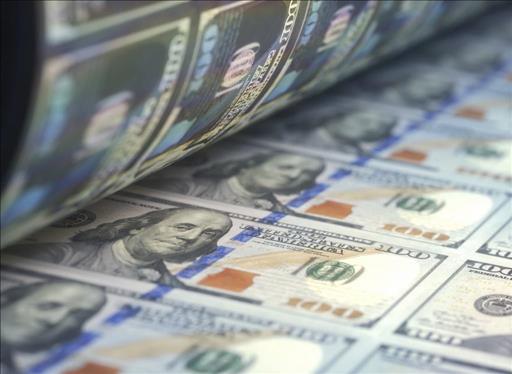(MENAFN- Asia Times) TOKYO – It's beginning to feel a lot like 2013 in Asian markets again.
That was the year of the notorious '' ,'' when just a whiff of the federal Reserve scaling back on asset purchases tanked emerging markets everywhere. That triggered a sudden surge in US yields, plunging Stocks and pivots to ''risk-off'' trades that upended all asset classes.
At the time, Morgan Stanley published a ''fragile five'' list no government wanted to be on. The unfortunate listees were India, Indonesia, Brazil, South Africa and Turkey. This time around, as markets fret over the Fed tapering again, the Philippines would surely be on the fragile list – if not other neighbors as Covid-19 fallout deepens.
Yet developing Asia is in harm's way to a much greater degree in 2021 than it was in 2013. The reason: the dramatic measures governments took to support cratering economies. Debt-to-gross domestic product (GDP) ratios have surged over the last 18 months.
What worries Changyong Rhee, the International Monetary Fund's Asia-Pacific director, is that the region has little-to-no left if coronavirus damage increases.
''Asia-Pacific countries provided significant fiscal and monetary policy support to cushion the impact of the pandemic on their economies,'' Rhee says. ''Many, especially the emerging market and developing economies, are running out of policy space.''
The problem, he explains, is that ''unlike in past recessions, the prospects for the global trade to lead us back to recovery are rather uncertain. If anything, the Covid-19 pandemic has the potential to accelerate the China–US trade and technology tensions and permanently change the landscape of global value chains and international investment flows.''
The pre-existing conditions that Asia entered the with are already causing strains in capitals throughout the region. Indonesia's go-slow reform approach of recent years has the government pressuring the central bank to buy debt directly from the Finance Ministry.
The Philippines, too, is edging toward its own method of so-called ''debt monetization'' as infection rates surge despite lockdowns. Malaysia's multi-year political paralysis problem has Putrajaya in disarray as new lockdowns loom. Thailand's economy is tanking as its two main growth engines – exports and tourism – backfire on a government led by a former general.

A motorbike passes through an almost empty Khao San Road tourist spot in Bangkok. Photo: Pornprom Satrabhaya / Bangkok Post / AFP
Singapore, until recently a Covid-19 exemplar, is announcing new travel bans. Earlier this month, the World Economic Forum canceled plans to hold its ''Davos'' in Singapore this year. In scrapping the August meeting, WEF cited ''tragic circumstances unfolding across geographies.'' The city's Shangri-La Dialogue , a massive annual event, also just canceled.
Even best-in-the-Covid-class Taiwan faces the specter of new restrictions. In fact, Taiwan's all-important chip industry is being disrupted by a triple-whammy of threats: Covid infections, droughts and blackouts, the latter caused by a power-plant accident. Add in the island's difficulty procuring and a globally vital semiconductor supplier is in growing turmoil.
China's powerful post-Covid-recovery, meantime, is looking softer than first hoped. Businesses are turning more cautious, car and property sales are losing steam and rising raw material costs are squeezing .
A Standard Chartered survey of more than 500 mainland small-to-midsize companies found that optimism eased in May. Its sub-index for ''expectations'' could be an omen of downside GDP surprises to come.
''Domestically focused SMEs seem more vulnerable to rising input costs, while export-oriented SMEs'' profit margins remained intact on strong new orders and elevated output prices,'' says Standard Chartered economist Lan Shen.
Japan, not surprisingly, is sliding back toward recession, whether or not the Tokyo Olympics planned for July happens. While the rest of the globe fears inflation, Japan's core consumer price index fell for a ninth consecutive month in April. More data for May prices in Tokyo fell yet again, reminding investors that the Bank of Japan's 2% target is a long way off.

A man walks past an electronic quotation board displaying the closing numbers of share prices at the Tokyo Stock Exchange in Tokyo on May 17, 2021. Photo: AFP / Kazuhiro Nogi
South Korea remains a standout in the region. The Bank of Korea just raised its 2021 to 4%, supported by improving export demand, healthy corporate investment and signs of life in private consumption. Because the BOK never went the quantitative easing route, it has more ammunition than peers should the global economy suffer a weak-growth relapse.
The rest of Asia, not so much, as the Fed mulls hitting the brakes. Top Fed officials – including vice chairman Richard Clarida – are hitting the airwaves to telegraph that ''last call'' might be on the way. Central bankers, it's often said, must yank away the punchbowl just as the party gets going.
Under chairman Jerome Powell since early 2018, the Fed has been opening more and more spigots. Since the initial Covid shock of early 2020, it's become more like a monetary tsunami gaining ever greater force.
This week, the flow of cash into the Fed's reverse , or RRP, jumped to a record high of $485 billion. That is driving key short-term interest rates toward – or perhaps below – zero. Financial institutions are extraordinarily cash-rich these days, preferring to plow money into government debt than make loans. Since March, these cash-heavy entities have been loaning the Fed more and more on an overnight basis at 0%.
Established in 2013, when Ben Bernanke ran the Fed, this reverse repo program aimed to tame gyrations in market rates by soaking up extra cash. Yet the massive buildup of dollars in the funding markets is fueling speculation about the Fed scaling back on huge asset purchases.
''US funding markets are currently awash with liquidity,'' says analyst Mark Cabana at Bank of America.
As Clarida told Yahoo Finance this week: ''There will come a time in upcoming meetings, we''ll be at the point where we can begin to discuss scaling back the pace of asset purchases. It's going to depend on the flow of data that we get.''

A weak US dollar is coinciding with low US investment rates, massive stimuli and inflation fears. Photo: AFP
Any scaling back on the $80 billion of and $40 billion of mortgage-backed securities the Fed buys each month would hit Asia hard. US Treasury yields would be sure to head back toward 3%, upending this region's GDP and corporate profit trajectories.
In a report this week, the World Bank warned that ''public debt in emerging markets has surged to levels not seen in 50 years, and many developing countries have increasingly taken on debt on non-concessional terms – from private lenders and non-Paris Club members. As the Covid-19 pandemic wreaks havoc on the global economy, poorer countries who will be hardest hit by the virus will also face a debt crisis.''
Economist Emre Tiftik at the Institute of International Finance says total emerging market debt edged higher in the first quarter of 2021, up some $11 trillion since end-2019 – to $86 trillion, or 246% of collective GDP. ''With EM government debt levels up 15% since end-2019 and revenues hit by the pandemic, debt service is challenging for many,'' he says.
As the Fed hints at a tapering, Tiftik is watching, in particular, ''pandemic-related spending increases and revenue losses that have made debt service a greater burden'' for countries including India, Indonesia, the and Turkey.
''For many EMs,'' he says, ''much-needed improvements in domestic tax regimes could help boost revenue capacity. However, heightened political and social tensions as the pandemic wears on could limit governments'' willingness to deliver structural tax reforms, leaving many sovereigns more reliant on domestic and international debt markets.''
Going forward, there are other reasons why fiscal pressures could increase, regardless of top-line economic output. ''Growing investor focus on climate resilience could put upward pressure on borrowing costs for vulnerable EM sovereigns,'' Tiftik says.
One positive trend: central banks in emerging Asian economies last year increased by $467.7 billion, the most since 2013. This suggests the region learned a key lesson from that chaotic period. Yet this next one could be of a much bigger magnitude, given how much more invested the Fed is, literally, in asset markets.
''The 2013 taper tantrum happened before anything actually… happened'' in that particular year, says analyst Nick Colas at DataTrek Research. ''It's fair to say it was a tantrum about Fed miscommunication rather than actual Fed policy.''
Next time, Asia might not be so lucky. Particularly with markets looking like they might start the Fed's tightening before it does.
MENAFN28052021000159011032ID1102161306